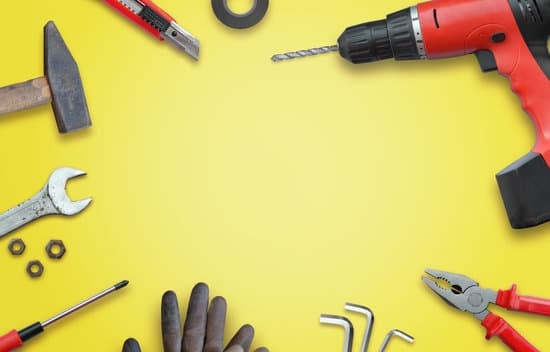Are there home improvement stores in Japan? This article aims to explore the home improvement scene in Japan, from the history of home improvement stores to the unique features of Japanese stores and the DIY culture in the country.
We will also take a closer look at the major home improvement store chains in Japan and compare them with their counterparts in the US. Additionally, we will provide tips for DIY enthusiasts visiting Japan and discuss the growing presence of home improvement stores in the country.
Japan is known for its rich heritage and traditional craftsmanship, but it also has a thriving modern retail industry, including home improvement stores. As the country embraces new trends and lifestyles, there has been a noticeable rise in hands-on home improvement projects and a growing interest in DIY culture. This article will delve into this evolving landscape and shed light on how Japanese home improvement differs from Western practices.
The increasing demand for sustainable living and minimalism has also influenced home improvement trends in Japan, prompting both consumers and retailers to adapt to these changes. By understanding the unique features of Japanese home improvement stores and exploring the history of their development, we can gain valuable insights into the future of the Japanese home improvement industry.
History of Home Improvement Stores in Japan
The history of home improvement stores in Japan dates back to the Edo period, where traditional craftsmanship and woodworking skills were highly valued. During this time, carpenters and artisans would create and sell tools, materials, and supplies for home improvement projects. These stores were often small, family-owned businesses that catered to the local community’s needs. However, with the country’s rapid modernization in the late 19th century, these traditional stores began to evolve into more modern retail establishments.
The transition from traditional craftsmanship to modern retail was heavily influenced by Western home improvement practices. As Japan opened up to foreign trade and technology, the demand for Western-style homes and renovation techniques grew. This led to the emergence of larger commercial home improvement stores modeled after their American and European counterparts.
Today, major chains such as Shimachu, Kohnan, and Cainz are at the forefront of the home improvement industry in Japan. These stores offer a wide range of products including building materials, tools, hardware, gardening supplies, and interior fixtures.
The availability of online platforms has also allowed these stores to expand their reach beyond physical locations. These traditional craft-inspired spaces have integrated modern technologies that not only provide convenience but also preserve Japanese heritage through the careful selection of quality products.
- Home Depot
- Lowes
- Menards
Major Home Improvement Store Chains in Japan
When it comes to home improvement stores in Japan, several major chains dominate the industry. One of the biggest players is Nitori, which not only offers a wide range of furniture and home decor but also provides DIY tools and building materials. Another prominent name is Cainz, known for its comprehensive selection of products for both professional builders and DIY enthusiasts. Other notable home improvement store chains in Japan include Shimachu, Komeri, and Konan.
These major home improvement store chains offer a mix of traditional Japanese craftsmanship and modern retail practices. They cater to different consumer needs and preferences, with some focusing more on traditional building materials and techniques while others prioritize convenience and modern design. Despite the differences in their approaches, all of these chains share a commitment to providing high-quality products and reliable service to their customers.
In addition to these established players, there has been an increasing presence of international home improvement store brands in Japan in recent years. This trend reflects the growing demand for innovative products and a more diverse range of options among Japanese consumers. As a result, the home improvement retail landscape in Japan continues to evolve, offering a combination of local expertise and global influences.
| Home Improvement Store Chains | Unique Features |
|---|---|
| Nitori | Offers a wide range of furniture, home decor, DIY tools, and building materials |
| Cainz | Comprehensive selection of products for professional builders and DIY enthusiasts |
| Shimachu | Focuses on traditional Japanese craftsmanship and building techniques |
Unique Features of Japanese Home Improvement Stores
When it comes to home improvement stores, Japan offers a unique experience that sets it apart from Western stores. From the layout and design of the stores to the products and services offered, there are several distinctive features that make Japanese home improvement stores stand out.
Some of the unique features of Japanese home improvement stores include:
- Compact and efficient store layouts: Unlike the sprawling warehouse-style layouts common in Western stores, Japanese home improvement stores are known for their compact and efficient designs. This allows for easier navigation and access to a wide range of products in a smaller space.
- Focus on high-quality and innovative products: Japanese home improvement stores prioritize offering high-quality and innovative products that cater to the needs of their customers. From cutting-edge tools to eco-friendly materials, these stores are at the forefront of bringing new and innovative products to the market.
- Customer service oriented approach: Japanese home improvement stores prioritize customer service, often providing expert advice and assistance to customers embarking on DIY projects. The staff members are knowledgeable about their products and are always ready to assist customers with their home improvement needs.
These unique features contribute to the overall appeal and success of Japanese home improvement stores, making them a popular destination for both DIY enthusiasts and professional contractors alike. Whether you’re looking for traditional craftsmanship or modern innovations, Japanese home improvement stores have something for everyone.
DIY Culture in Japan
The DIY culture in Japan has been on the rise in recent years, with more and more people taking on home improvement projects themselves. This trend is driven by a variety of factors, including the desire for greater customization and personalization, as well as the satisfaction of being able to create something with one’s own hands.
In addition, the popularity of home improvement shows and online tutorials has also contributed to the increasing interest in DIY projects among Japanese homeowners.
One unique aspect of the DIY culture in Japan is the emphasis on craftsmanship and attention to detail. Many Japanese DIY enthusiasts take great pride in honing their skills and creating high-quality, precision work. This focus on excellence is reflected in the meticulous approach that many Japanese people take towards their home improvement projects, whether it’s building furniture, renovating a room, or crafting decorative items.
In addition to traditional skills such as woodworking and carpentry, modern DIY culture in Japan also encompasses a wide range of activities such as gardening, interior design, and even home automation. As a result, there are now specialized stores that cater to these diverse interests, offering everything from tools and materials to workshops and classes. Indeed, this growing interest in hands-on home improvement projects has led to an increase in demand for specialized services and resources.
Home Improvement Trends in Japan
In recent years, the home improvement industry in Japan has witnessed a shift towards minimalism and sustainable living. Japanese homeowners are increasingly focused on creating functional, clutter-free spaces that align with the principles of minimalism. This trend has led to the popularity of home organization and storage solutions that maximize space while maintaining a clean and simple aesthetic.
Furthermore, sustainability has become a key focus for many Japanese consumers when it comes to home improvement. With a growing awareness of environmental issues, there is a rising demand for eco-friendly and energy-efficient products.
This includes everything from energy-saving appliances to sustainable building materials and eco-conscious furniture options. As a result, many home improvement stores in Japan have expanded their offerings to include a wide range of environmentally friendly products to cater to this shift in consumer preferences.
Additionally, the concept of “mottainai,” which roughly translates to “what a waste” or “don’t be wasteful,” has become deeply ingrained in Japanese culture and is reflected in the approach to home improvement. This philosophy encourages the reuse and repurposing of materials, as well as sustainable practices such as recycling and upcycling. As a result, DIY enthusiasts in Japan are increasingly embracing creative ways to renovate and improve their homes while minimizing waste and being mindful of their environmental impact.
| Home Improvement Trend | Description |
|---|---|
| Minimalism | Focus on creating functional, clutter-free spaces with an emphasis on simplicity. |
| Sustainable Living | Rising demand for eco-friendly and energy-efficient products, as well as an emphasis on reusing and repurposing materials. |
Comparison With Home Improvement Stores in the US
When it comes to home improvement stores, there are noticeable differences and similarities between Japan and the US. Understanding these variances can provide insight into the cultural preferences and shopping behaviors of each country.
Product Offerings and Design Styles
Japanese home improvement stores are known for their minimalist design styles, focusing on compact and functional products that cater to small living spaces. On the other hand, American stores offer a wider range of options, including larger furniture pieces and appliances suited for spacious homes. Additionally, Japanese stores may feature more traditional and natural materials such as wood and bamboo, in contrast to the modern and diverse offerings found in American stores.
Customer Service and Shopping Experience
In Japan, customer service is highly valued, with store staff providing personalized assistance to customers. Homeowners can expect detailed explanations on how to use products and even receive assistance with installations. In the US, customer service varies by store but generally involves a more hands-off approach, with an emphasis on self-service. The shopping experience in Japanese stores is often described as meticulous and serene, creating a peaceful environment for shoppers compared to the bustling atmosphere of American stores.
Emphasis on Sustainability
While both countries have seen a rise in sustainable living practices, Japanese home improvement stores have integrated eco-friendly products seamlessly into their offerings. From energy-efficient appliances to recyclable building materials, these stores prioritize environmental consciousness in a way that reflects the broader sustainability movement in Japan. In comparison, while US home improvement stores also offer green alternatives, they may not necessarily be as prominently featured or readily available as they are in Japan.
By examining these differences and similarities between home improvement stores in Japan and the US, it’s clear that each country has its own unique approach to meeting the needs of homeowners. These distinctions offer valuable insights into consumer behavior, lifestyle preferences, and design trends across different cultures.
Tips for DIY Enthusiasts Visiting Japan
When visiting Japan as a DIY enthusiast, it’s important to know how to navigate the home improvement stores in the country and find the tools and materials you need for your projects. Whether you’re looking to do some small repairs or renovations during your trip or simply want to explore the unique features of Japanese home improvement stores, there are a few tips that can help make your experience smoother and more enjoyable.
Research Before You Go
Before heading to Japan, take some time to research the major home improvement store chains in the country. Familiarize yourself with their locations, operating hours, and any specific policies or procedures they may have. This will save you time and prevent any confusion when you arrive at the stores.
Language Barriers
While many home improvement stores in Japan do have English signage and some staff members who speak English, it’s always helpful to learn some basic Japanese phrases related to home improvement and DIY projects. This will not only make communication easier but also show respect for the local culture.
Bring Your Measurements and Specifications
If you have specific projects in mind, it’s a good idea to bring measurements and specifications with you when visiting home improvement stores in Japan. This will make it easier to find the right tools and materials for your needs, especially if there are language barriers that may make communication with store staff challenging.
Overall, navigating home improvement stores in Japan can be an exciting adventure for DIY enthusiasts. By taking the time to prepare before your trip, understanding cultural differences, and being mindful of language barriers, you can make the most of your shopping experience while exploring the unique features of Japanese home improvement stores.
Conclusion
In conclusion, the home improvement industry in Japan has seen significant growth and evolution over the years. From traditional craftsmanship to modern retail, home improvement stores in Japan have adapted to meet the changing needs and preferences of consumers. Major chains such as Konan, D2, and Cainz have become household names, offering a wide range of products and services for DIY enthusiasts and homeowners alike.
The unique features of Japanese home improvement stores, including customer service, product variety, and focus on quality, set them apart from their Western counterparts. The rise of hands-on DIY culture in Japan has also contributed to the growing presence of home improvement stores, with more people taking on home improvement projects themselves.
As the demand for sustainable living and minimalist design continues to grow in Japan, home improvement stores are likely to adapt and offer products that align with these trends. This presents a promising future for the Japanese home improvement industry as it continues to meet the evolving needs of consumers. Overall, the presence of home improvement stores in Japan reflects a thriving market that caters to the DIY enthusiast and homeowners looking to improve their living spaces.

I’m thrilled to have you here as a part of the Remodeling Top community. This is where my journey as an architect and remodeling enthusiast intersects with your passion for transforming houses into dream homes.





